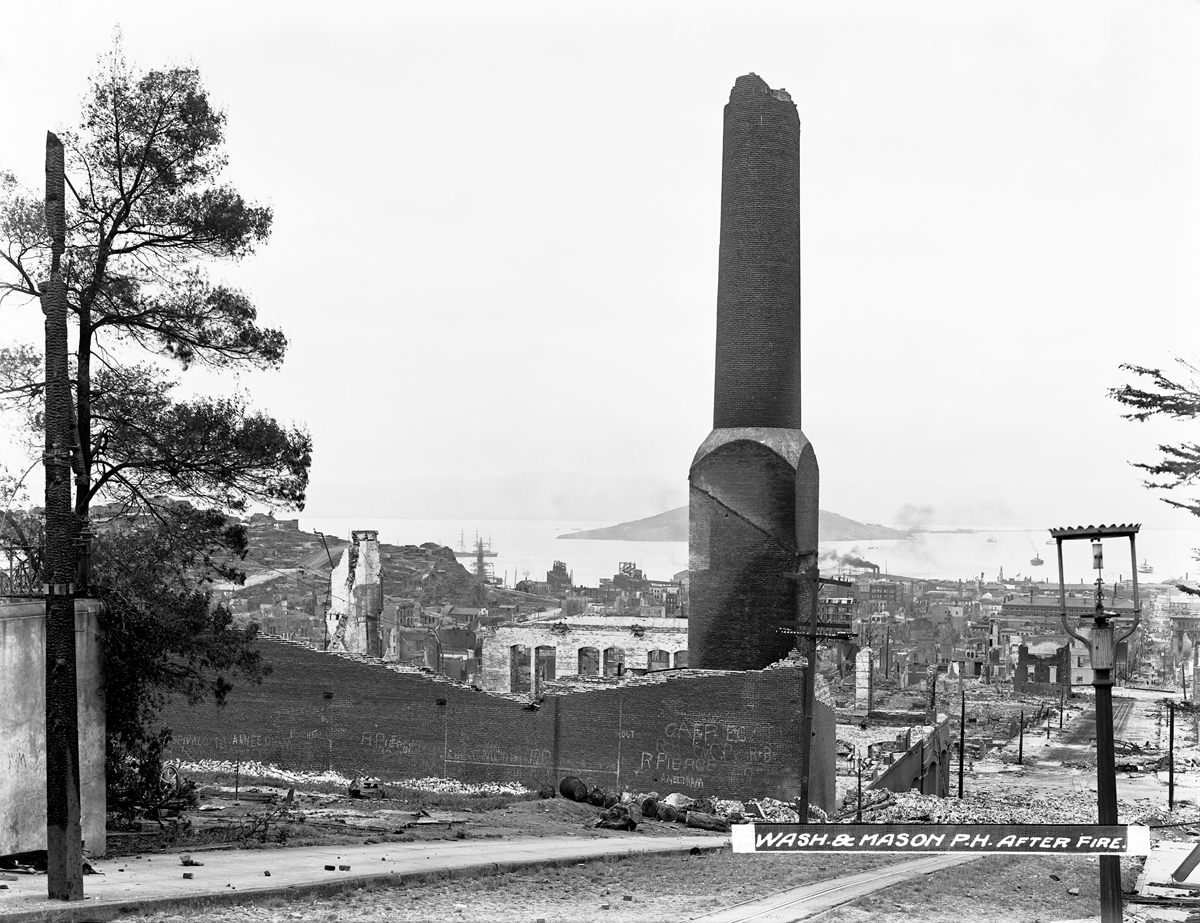A teacher blows a whistle. Students drop to the floor, duck under their desks, cover their heads, and hold on waiting for the imaginary rumbling of the ground to stop — an earthquake drill.

The view down to the Bay from Washington and Mason after the 1906 earthquake and fire.
If you grew up in California, you might remember participating in this kind of activity. As we now approach the 26th anniversary of the Loma Prieta earthquake this month, it’s a good time to stop and share emergency tips for transit.
Hopefully you have a plan for what to do and where to go if you were at home, school or work during a major emergency. But do you know what to do if a major event, especially an earthquake, occurred while you were on Muni — in the subway or on the surface?
In addition to the October 17 Loma Prieta observance, this Thursday is the Great ShakeOut Earthquake Drills, so we wanted to take the opportunity to highlight a few basic safety and service measures to be aware of in the event of an emergency:
-
Stay calm and remain on the vehicle: While your first inclination may be to flee, the Muni bus or train you’re on might just be the safest place given that there could be falling debris, downed electrical wires and other dangerous hazards outside of the vehicle.
-
Listen for instructions from the operator: In the initial moments following an earthquake, the operator, if on the surface, will pull the vehicle over to the nearest stop or safest location. A train operator in the subway will stop immediately. The operator will then wait for specific instructions from Central Control or a transit inspector on how to proceed and will direct you accordingly.
-
Report any injuries or hazards: If you see anyone who needs medical assistance or see any potential hazards, report this to the operator immediately, so that the operator can take the appropriate steps.
-
In the subway or tunnel: Unless there is an imminent danger, such as a fire, do not evacuate the train unless instructed to do so by the operator. If you are instructed to evacuate, once off the train, passengers should stay together. Either the operator or other SFMTA personnel will help guide you out of the tunnel or subway.
-
Passengers with disabilities: If ordered to evacuate a train due to an imminent danger, persons using a wheelchair will most likely need to leave their chair behind. Non-ambulatory passengers will be assisted by either the train operator, other SFMTA personnel or emergency responders. During an evacuation, other passengers may be asked to assist with moving non-ambulatory passengers and others with mobility needs to safety.
-
Maintenance and safety check: Central Control, transit inspectors, and System Safety personnel will check the system’s power, overhead wires, tracks, tunnels and roads to determine the severity of any damage and whether or not Muni service can continue.
-
Service restoration: If it has been determined that service can continue, the operator will proceed on their regular route and may pick up passengers who are not waiting at regular Muni stops. Vehicles may be more crowded than usual, so passengers are asked to make as much room as possible to accommodate others.
-
Service substitution: For those electric trolley bus routes and streetcar and Metro lines where staff determine that regular service cannot be immediately restored, motor buses will be deployed to provide service as soon as possible.
-
Phone/text communication: During an emergency, call volumes for wireless and landline services will increase. If your call cannot go, remember to use text (SMS) messaging. Also, be sure your out of area contacts are in place. And, of course, limit non-emergency phone calls.
It is never too early to get yourself prepared for an emergency, so why not start now? For more information on emergency preparedness please visit the federal government’s Ready.gov and the San Francisco Department of Emergency Management's SF72.org.